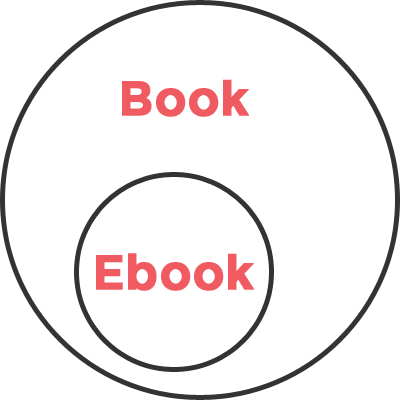Object-Oriented Programming (OOP)
…in JavaScript is really
“Object-oriented” JavaScript
JavaScript is not a strict OO language like Java, but we can still use it in an object-oriented way.
Future versions of JavaScript are already in the works with more OO features built into the language.
JavaScript Object Prototypes
Every object in JavaScript has a prototype.
All JavaScript objects inherit their properties and their methods from their prototype.
This is called prototypal inheritance
Object Prototypes
We know that when we create a new array:
- It will have a
lengthproperty - It will have a
map()method - It will have a
filter()method - It will have a
join()method
An array inherits these properties and methods from an Array prototype that defines what an array is (properties) and what it can do (methods)
Object Prototype Example
Let's use a book as an example of an object prototype.
Book prototype
Properties:
- title
- author
- pages
Methods:
- read()
- buy()
Object Prototype Instances
There can be many instances of object prototypes:
The Giver
by Lois Lowry
179 pages
Fox in Sox
by Dr. Seuss
62 pages
A Wrinkle in Time
by Madeline L'Engle
211 pages
Each is an instance of the Book object prototype.
Defining an object prototype
Define a constructor function with the object prototype's properties and methods:
function Book(title, author, numPages) {
this.title = title;
this.author = author;
this.numPages = numPages;
this.currentPage = 0;
this.read = function() {
this.currentPage = this.numPages;
console.log("You read " + this.numPages + " pages!");
};
}Conventionally, object prototype names are capitalized.
Instantiating an object
Now that we have a prototype, we can instantiate a new object:
var book = new Book("Robot Dreams", "Isaac Asimov", 320);
book.read(); // Will log "You read 320 pages!" to the consoleThis creates a new object that inherits the properties and methods from the prototype that we defined.
What does new do?
- Creates a new
Object - Creates and binds a new
thisto that object - Sets the new Object's
prototypeproperty to be the constructor function'sprototypeobject - Executes the constructor function
- Returns the newly created object
Adding new properties to objects
Let's say we've created two book objects using the Book prototype we set up earlier:
var myBook1 = new Book('The Boxcar Children', 'Gertrude Chandler Warner', 160);
var myBook2 = new Book('Around the World in 80 Days', 'Jules Verne', 315);Let's add a series property to the first book:
myBook1.series = 'The Boxcar Children';This new property gets added to The Boxcar Children, but not to Around the World in 80 days, and not to any other new objects created from the Book prototype.
Adding new properties and methods to object prototypes
We can use the prototype property to add new properties and methods to the object prototype:
Adding a property:
Book.prototype.series = '';Adding a method:
Book.prototype.buy = function(){
console.log('You bought ' + this.name);
}Let's Develop It!
Create a Video object prototype. The Video object prototype should have the following properties and methods:
title- a stringuploader- a string, the person who uploaded the videoseconds- a number, the duration of the videowatch()- a method that logs a string to the console, e.g. "You watched all 76 seconds of Maru in a box!"
Then instantiate a new Video object and call the watch() method on it.
Object-oriented programming
Object prototypes can inherit properties and methods from other object prototypes.
Book
titleauthorpagesread()buy()
Ebook
Inherits from book, but also has:
filesizedownload()
Paperback
Inherits from book, but also has:
coverburn()
Extending object prototypes
First, define a constructor function
function PaperBack(title, author, numPages, cover) {
Book.call(this, title, author, numPages);
this.cover = cover;
}Extend the Book object prototype
PaperBack.prototype = Object.create(Book.prototype);Define a new method on this object prototype
PaperBack.prototype.burn = function() {
console.log("Omg, you burnt all " + this.numPages + " pages");
this.numPages = 0;
}Instantiate a new object
var paperback = new PaperBack("1984", "George Orwell", 250, "cover.jpg");
paperback.read();
paperback.burn();Inheritance

All Ebooks are Books, but not all Books are Ebooks.
Let's Develop It!
Building on the exercise from last time, create a new object prototype MusicVideo that extends Video. The constructor should also take in an artist property.
Instantiate a new MusicVideo object and call the watch() method on it.
Add a new method to the MusicVideo object prototype called rockOut() that logs a message to the console, e.g. "You just rocked out to Shake it Off by Taylor Swift!"
Clearer Constructors
By passing in a config object, we can make our code easier to read and understand:
function Book(config) {
this.title = config.title;
this.author = config.author;
this.numPages = config.numPages;
this.currentPage = 0;
}Then we pass in an object instead of a series of arguments to instantiate a new object:
var book = new Book({
title: "Robot Dreams",
author: "Isaac Asimov",
numPages: 320
});Optional Arguments
Use the || operator to define a default value for properties.
function Book(config) {
this.title = config.title || "Untitled";
this.author = config.author || "Unknown";
this.numPages = config.numPages || 100;
this.currentPage = 0;
}
var book = new Book({
title: "Robot Dreams",
numPages: 320
});Let's Develop It!
Building on the exercise from last time, comment out the MusicVideo code.
Change the Video constructor function to accept an object literal instead of multiple arguments.
Define a default value for every property.
Finally, instantiate a new Video object and call the watch() method on it.
Questions?
Any questions on object prototypes or inheritance?